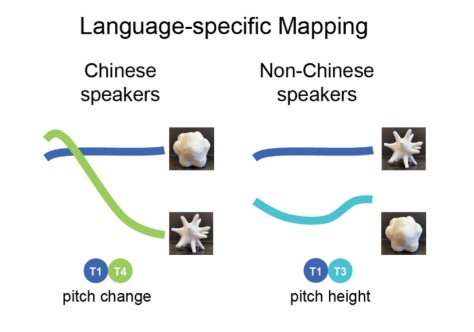We know that our brain is capable of many things, including the ability to learn languages. This includes reading, writing, speaking, you name it—but does it do the same for all languages, like reading Chinese characters that look so different from English? In “Does the brain read Chinese or Spanish the same way it reads English?” which was published in Frontiers for Young Minds, the writer gave an interesting summary of how written languages work, and how our brains decode these symbols as we read.
Most (if not all) spoken languages in the world are represented by writing systems that use symbols. These symbols are called orthographies. Orthographies can be alphabetic (such as English and Spanish), or non-alphabetic (such as Chinese and Japanese Kanji). In alphabetic orthographies, each symbol represents one phoneme—an individual sound—such as the /b/ sound in “book”. In non-alphabetic orthographies, each character represents more than a phoneme—it might symbolize a syllable, such as “朋” (péng) in the word “朋友” (péngyǒu).
Alphabetic orthographies can also differ from each other according to how well the graphemes (symbols or letters) and phonemes (the sounds) match up. When every letter almost always has only one sound, then we say that the orthography is consistent, or “shallow”. When letters can represent different sounds, then that orthography is considered inconsistent, or “deep”. Spanish is a shallow orthography because its letters are always pronounced the same way, while English is a deep orthography because some of its letters can have many pronunciations, such as the two different /c/ sounds in “circus”.
On the other hand, non-alphabetic orthographies can represent either a syllable or a one-syllable unit of meaning with each symbol (i.e. a morpheme). In “朋友” (péngyǒu), the character “朋” (péng) doesn’t have a meaning on its own! It’s just a syllable that goes with “友” (yǒu) to make a word that means “friend”. Another example is “的士” (deshì) which means taxi. The character “的” (de) on its own is a possessive pronoun as in “belongs to”, and “士” (shì) means “soldier”!
Is learning to read harder in some orthographies than others?
Reading requires us to match letters or symbols to the sounds they represent. This is a skill called phonological decoding. There is overwhelming support from research that shows learning to read is easier in consistent orthographies than in inconsistent orthographies. English readers take longer to learn to read than readers in almost all other alphabetic orthographies, and Chinese readers take even longer.
For children with dyslexia, this difficulty may depend on the language they’re trying to read in. Consistent orthographies like Spanish do not really affect their phonological decoding skills, which means that they can read words correctly, although they still tend to take more time than their peers who do not have dyslexia.
Inconsistent orthographies such as English tend to be harder even among peers who do not have dyslexia—this makes it even harder for children who have problems with phonological decoding, and mistakes in reading are more apparent. For a non-alphabetic language like Chinese, children with dyslexia also have difficulties reading, but more than having problems with phonological decoding, they may have trouble understanding how the character represents the meaning of a word. This skill is called morphological awareness, and it’s important for reading, too!
At BLIP Lab, we have a lot of fun activities that everyone can be a part of. Our Baby Talk-A-Thon study looks at how Singapore’s unique language landscape may affect language development in young children. In Red-Dot Baby-Talk, we ask people how familiar they are with our colourful Singlish words. More information about our studies can be found here!
Here’s a link to the original article: https://kids.frontiersin.org/article/10.3389/frym.2016.00026
Conrad, N. (2016.) Does the Brain Read Chinese or Spanish the Same Way It Reads English? Front. Young Minds, 4(26). doi: 10.3389/frym.2016.00026



